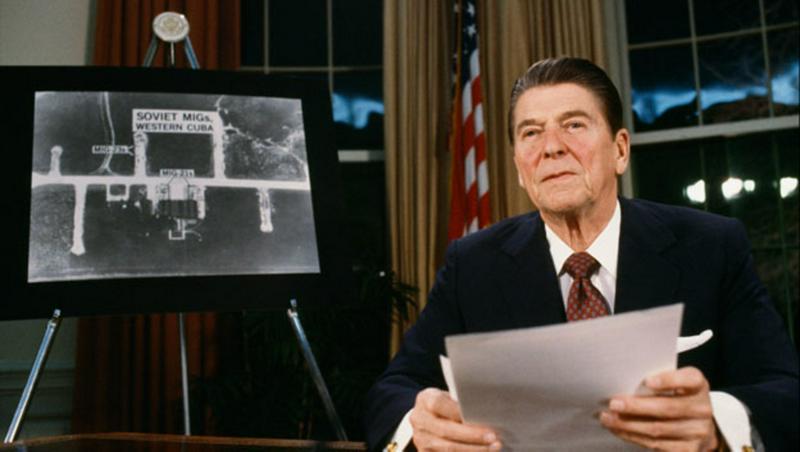President Reagan's Ambitious Star Wars Defense Plan
By | January 26, 2022

In 1983, President Reagan announced his Strategic Defense Initiative, which sounded like a bad Steven Segal movie crossed with “Back To The Future.” The highly implausible and even more costly program earned widespread criticism from government officials but general approval from Americans. Massachusetts Senator Edward Kennedy dubbed it “reckless 'Star Wars' schemes” and the name stuck.
At that time the Cold War’s threat of imminent nuclear annihilation hung over America like a guillotine. Despite the “Star Wars Defense” improbability and colossal cost, people, including the President, yearned for a solution to the threat of complete nuclear destruction however unlikely.

The Conceit
On March 23rd, 1983, President Reagan addressed the nation, “I call upon the scientific community in our country, those who gave us nuclear weapons, to turn their great talents now to the cause of mankind and world peace, to give us the means of rendering these nuclear weapons impotent and obsolete.”
It’s ironic that the nation that developed the boogeyman known as nuclear weapons now wanted the devil back in the closet. Unfortunately, creating a missile and laser array system that combined both satellites and ground projectiles remained even beyond "Doc Brown” and his Delorean.

The Response
Senator Kennedy of Massachusetts wasn’t the only one to denounce the advanced Acme idea. Louisiana Senator J. Bennett Johnston called it "absolute folly." However, the American people, traumatized by duck and cover drills along with television movies like “The Day After,” pined for a magic bullet to their darkest fears of nuclear annihilation by the Russians.
Curator of the International Spy Museum in Washington, D.C, Vince Houghton, felt Reagan “truly despised nuclear weapons, and especially despised the threat they posed to the security of the United States. As much as people love to give him grief for what would end up being a trillion-dollar quagmire, Reagan seemed to truly believe that ballistic missile defense could finally release us from the perpetual, enduring, soul-crushing threat of Armageddon.”

The Problem
One slight hitch arose in Reagan’s grand plan to end the Cold War’s nuclear stalemate: technology. The plan called for weaponized lasers, electromagnetic railguns, and thousands of advanced satellites, none of which existed at even half the capacity required. Reagan himself understood that the plan could take until the turn of the century, if not longer to complete.
A study by the American Physical Society, as Houghton pointed out, “Concluded that not a single one of the systems, then under study or development, was even remotely close to deployment. It noted that every single system under consideration had to at least improve its energy output by 100 times to be effective. In some cases, as much as a million times.”

The Scale
Another monkey wrench in what would become a multi-billion dollar project was the size of Russia’s arsenal. At that time, the Soviets boasted over 40,000 warheads and 1,000 ICBM’s packing 10 warheads apiece, capable of overwhelming any target within 30 minutes of launch. As if that wasn’t terrifying enough, they could also utilize nuclear submarines stocked with arsenals to destroy thousands of targets even more quickly!
Even if Reagan’s multi-faceted Star Wars defense system could take out 90% of the Soviet’s weapons, the United States would have still ended up a wasteland of nuclear ruin. In 1993, the New York Times reported that the Pentagon had “rigged a test and falsified other data to make the $30 billion program appear more successful than it was.”
That probably played into President Clinton’s decision to scrap the project altogether. Of course, that didn’t stop the development of the Missile Defense Agency, which has run a bill of more than $100 billion since 2002.
